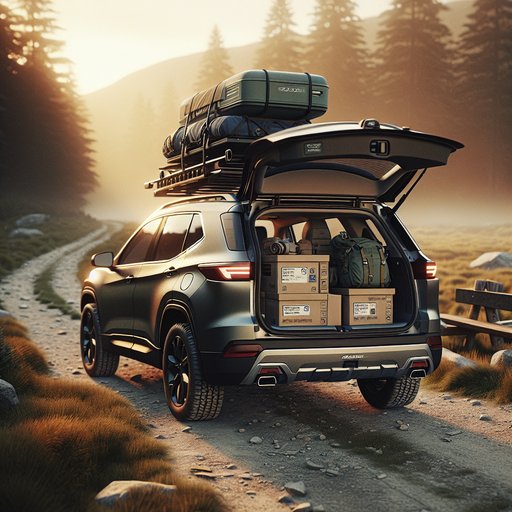
We ran a week of box-by-box cargo measurements, roof-rack swaps, and tie‑down checks in the 2024 Subaru Outback Wilderness to see how its adventure chops translate to everyday hauling. This focuses on usable volume, ease of racking up top, and how well loads can be secured inside.
Our test car was a 2024 Outback Wilderness: 2.4‑liter turbo flat‑four (260 hp, 277 lb‑ft), CVT with AWD, 9.5 inches of ground clearance, and the Wilderness roof rails with higher load ratings. Tires were the stock Yokohama Geolandar A/T in 225/65R17. We logged 420 miles of city errands and highway runs with a tape measure, torque wrench, and a stack of standardized boxes. Subaru quotes 32.6 cu ft behind the second row and 75.6 cu ft max.
Our measurements: floor length 41.5 in behind the seats (73.0 in seats folded), width 58.0 in at the opening and 43.0 in between wheel arches, height to headliner ~33 in, ~19.5 in to the cargo cover. Test boxes were “medium” moving boxes (18×18×16 in, 3.0 cu ft each) and 27‑gal totes (approx. 30.7×20.5×14.4 in). With the rear seats up, the floor footprint takes four medium boxes per layer (two wide × two deep).
That’s four boxes (12 cu ft) under the cargo cover; remove the cover and we comfortably stacked a second layer to the window line for eight boxes total (24 cu ft), plus small soft items in the remaining voids. The low liftover and nearly flat sill make loading heavy boxes manageable, and the 60/40 split lets a stroller or set of skis ride alongside two boxes without crushing them. Seats folded, the long load bay fits four medium boxes front‑to‑back by two across per layer—eight per layer—and we stacked two layers to the roof for 16 boxes (48 cu ft). That aligns with the idea that SAE volume includes air gaps the boxes can’t fill.
In totes, we fit two side‑by‑side per layer with seats up (four total stacked), and with seats folded we carried eight (two wide × two deep × two high). The 73‑inch load length swallowed a flat‑packed 72×30‑inch table with the hatch closed. Roof setup is straightforward. The Wilderness’ raised rails accept clamp‑on towers; we installed Yakima TimberLine towers with 60‑in CoreBars in about 7 minutes with the included torque key.
Rail ratings are 220 lb dynamic and 700 lb static (great for tents). We ran a Thule Force XT XL (18 cu ft) box; wind noise rose by ~2 dB at 70 mph and highway economy dropped from 27 to 24–25 mpg indicated. Crosswind stability remained solid, and access to the hatch wasn’t impeded. Load securing is excellent: four metal D‑rings in the cargo floor, two bag hooks, and a 12V outlet.
The Wilderness adds a water‑resistant, textured seatback and cargo floor that kept straps from slipping and shrugged off muddy totes. Overall, the Outback Wilderness trades a bit of ultimate interior volume to box inefficiency, but the combination of a long, flat load bay, stout rails, and proper tie‑downs makes it one of the most usable adventure wagons. If you don’t need the higher rails or all‑terrain tires, a non‑Wilderness Outback is quieter and slightly more efficient while remaining nearly as practical.












